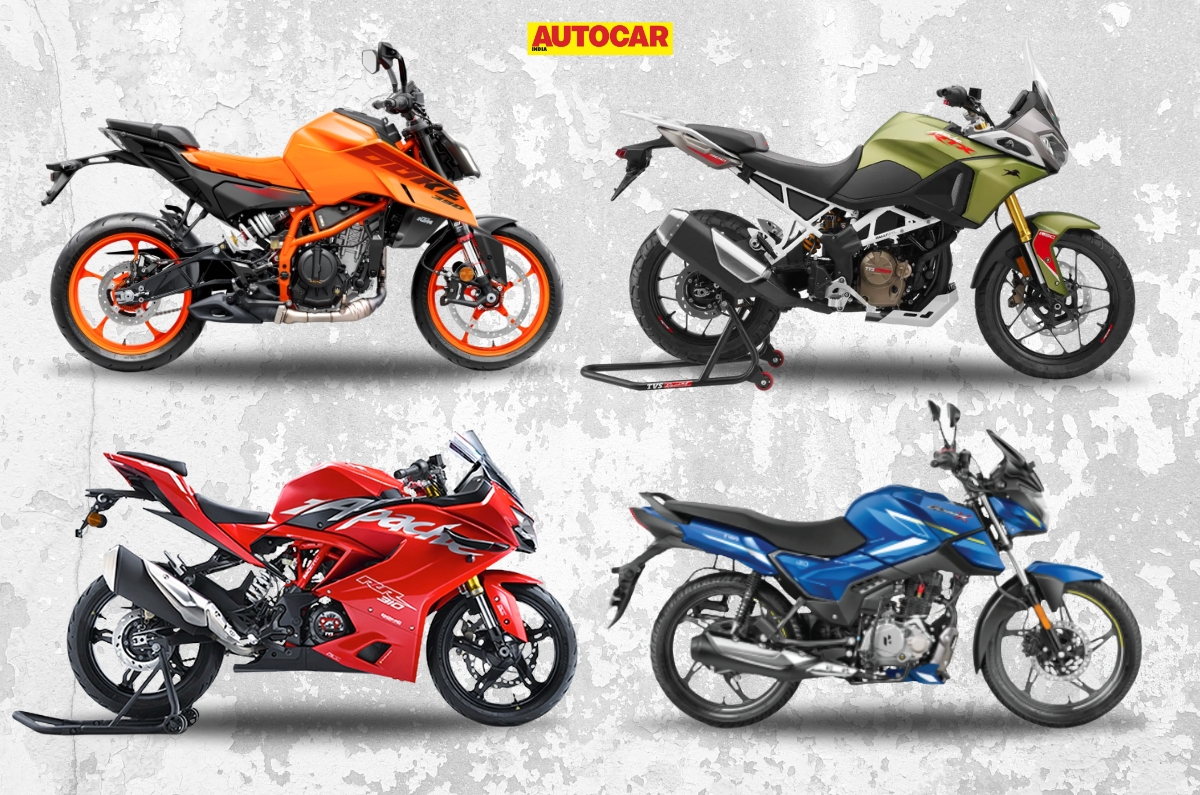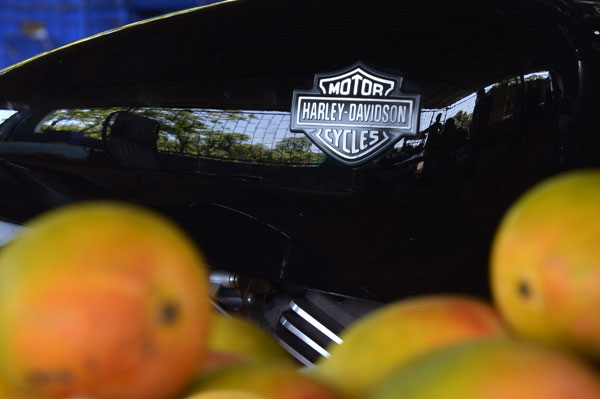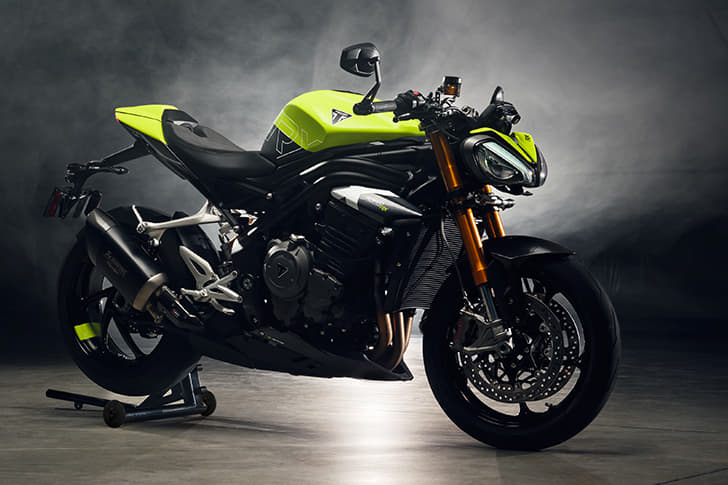A new Ducati flagship usually takes the world by storm; and despite sharing the name of its predecessor, the new Panigale V4 is no less of a game changer. We recently spent a day riding the new V4 at the Ricardo Tormo MotoGP circuit in Valencia, but we can’t tell you anything about the experience until the embargo lifts on Monday the 29th. Until then, here’s a detailed breakdown of all the technology that goes into Ducati’s flagship.
ENGINE
The new Desmosedici Stradale is a big landmark for Ducati. This is the very first time that a series production Ducati will feature a V4 engine, after decades of specialising in high-performance V-twins. The main reason behind the shift was that a V4 offered better packaging options than the V-twins – which were getting increasingly larger – could offer. The fact that the Panigale is the only superbike in the brand’s history not to win a WSBK championship, yet is probably a factor too.
It makes sense that Ducati would look to their MotoGP project for direction, what with the road going V4. Called the Desmosedici Stradale, the road going engine features a 90 degree V-angle, desmodromic valve actuation and an 81mm bore, all features also seen on the GP bike. However, Ducati took some liberties with a longer stroke, thus resulting in a 1,103c capacity. This was to offer a broad spread of torque that would be appreciable for road use. A homologation-conforming 1,000cc version will be developed for racing in WSBK from the 2019 season.
When Ducati officially announced the new V4 they said it would retain the soul of the old twin and that’s evident from the moment you fire the bike up. The engine settles into a familiar gruff, mechanical and slightly clattery idle quite reminiscent of the old Superquadro V-twin. However, it sounds a lot like the factory MotoGP bike at full chat and this is probably because the road engine shares the same 90-degree V-angle and ‘twin pulse’ firing order from the race bike. This firing order is a result of a 70-degree crank-pin offset and the 90-degree V-angle. The firing order of 0, 90, 290 and 380 degrees fires the front cylinder on the alternator side quickly followed by the rear cylinder on the same side. Then, after an interval the front cylinder on the clutch side is fired at 290 degrees, followed by the rear cylinder on the same side after another 90 degrees. This firing order is what produces the unique V-twin/MotoGP sound.
Another lesson taken from MotoGP is the counter-rotating crankshaft which uses a jack shaft to rotate in the opposite direction to the rear wheel. This is said to have numerous benefits, as it cancels out some of the gyroscopic forces created by the wheels; thus resulting in more agility and easier handling. It also brings an inertia-linked advantage by working against the inertia created by the rear wheel. During acceleration, it reduces the tendency to wheelie; but it also helps during deceleration, with the crank’s inertia works against the rear wheel’s tendency to lift during aggressive braking.
The Desmosedici Stradale also features Ducati’s Variable Intake System which uses variable intake trumpet lengths to boost either the midrange, or top end performance as required. The system uses two stages of intake horns – the first stage horn is fixed to the throttle body, but the second stage horn resides on a movable steel guide that is controlled by an electric motor. When the steel guide is lowered, the movable horn joins the fixed horn below, thus increasing the length of the intake. Raising the movable horn means only the lower horn is in use, which provides a short intake. The entire system is controlled by the ECU, based on the rider’s requirements through the throttle. With VIS in place, Ducati didn’t need to use the variable valve timing seen in the Multistrada and Diavel motors as it would add excess weight and its benefits would only come through at lower revs – something which wasn’t as strong a priority in the case of the Panigale.
Ducati achieved their aim of tight packaging and the new engine is more compact than before and weighs just 2.2kg more than the old twin. The engine is positioned in a 42-degree backward angle which frees up space for larger radiators and also allows a further forward swingarm pivot point. Ducati says with the 90-degree V-angle, the engine is inherently well-balanced and there was no need for a balancer shaft.
The engine produces 214hp at 13,000rpm and 124Nm of torque at 10,000rpm. The redline resides even higher, at 14,000rpm. The optional full system exhaust by Akrapovic comes with its own engine map and adds a further 12hp. Buyers can also purchase a slip on-exhaust that boosts power to 220hp. Bringing in all this performance is a sky-high compression ratio of 14:1, and it’s worth bearing in mind that the minimum recommended fuel qaulity for this bike is 95 RON. However, what’s truly commendable is that even with performance levels approaching the realm of WSBK bikes, the regular service interval is set at 12,000km, while the desmodromic valve service is required only at the 24,000km mark.
CHASSIS
The old Panigale’s monocoque frame was deemed too stiff and Ducati wanted more control over chassis flex. The easy way to achieve this was moving to a traditional beam frame, but that would have added too much weight. This led to a new chassis concept that Ducati calls ‘front frame’. It's essentially a semi-beam frame structure that mounts to the front of the engine. The swingarm mounts to the rear cylinder bank, as well as to the end of the front frame and the engine is a stressed member of the entire chassis. Weight has been kept to a bare minimum - the shell-cast aluminium front frame weighs just 4kg while the aluminium rear swingarm is just under 2kg. Magnesium has been used for the front sub-frame that holds the headlamps and this weighs less than a kilo. Even the full-LED headlamp system weights just 1.5kg. Considering that this is a flagship Ducati sports bike, the single-sided swingarm comes as no surprise. The swingarm is now 67mm longer, but it weighs the same as the old Panigale’s. The fuel tank is a racing-style unit that sits partially in the conventional location but also extends under the seat. The front of the fuel tank area, which is no longer occupied by the tank, is used to house the electronics and battery (0.9kg lithium-ion battery in the case of the V4 S).
Overall, the 1,469mm wheelbase is now 32mm longer, trail is up by 4mm to 100mm and rake has increased by half a degree to 24.5 degrees. The new Panigale has a slightly more forward-bias in terms of weight distribution, with a font-to-rear split of 54.5/46.5. The riding position is similar to the old 1299 Panigale in that it is committed, but also spacious for tall riders. However, the foot-pegs have been raised by 10mm to add extra cornering clearance.
SUSPENSION AND BRAKES
The standard Panigale V4 uses a Showa Big Piston Fork up front and a Sachs rear shock. However, we didn’t ride the standard bike; instead we got to sample the semi-active Ohlins suspension on the V4S. This suspension offers incredible adjustability which changes as per the riding mode the bike is in. The system can be left to its own devices, or the rider can also tweak it as per their own requirements. Instead of the traditional Compression, Rebound and Preload adjustability, the new Ohlins Objective-Based Tuning Interface has broken it up into simpler units like ‘brake support, mid-corner, ‘acceleration’ and more. This helps the rider tune the suspension to what they’re feeling in a particular area of the corner, instead of having to know the dark art of traditional suspension tuning.
And then we come to the brakes. The previous Panigale 1299 was widely renowned for having some of the best brakes out there, but the V4 takes it to the next level. It features Brembo’s new Stylema callipers, which are the latest evolution of the previous range-topping M50 callipers. The Stylemas come in a more compact package and weigh 70gm lighter for each calliper – but without any loss in structural rigidity. They also claim better cooling properties and improved hydraulic performance. The Stylemas bite down on twin 330mm discs up front, while rear braking is handled by a single 245mm disc with a two-piston calliper. The braking system uses Bosch’s Cornering ABS function but it’s gained a few tricks up its sleeve, which we’ll discuss in the electronics section.
WHEELS AND TYRES
The Panigale V4S rides on forged aluminium wheels by Marchesini that are 100g lighter than the ones on the 1299 Panigale. Ducati will also sell interested customers a set of forged Magnesium wheels that further shed one kilo of weight. Pirelli has also developed a new version of its top-spec Supercorsa tyres for the V4. These feature a revised tread pattern and a new compound. The rear tyre also comes in a wider, new 60 section size, against the 55 section seen on most superbike tyres. This is a popular size in WSBK and is favoured for its extra diameter, which in turn offers extra lean angle. The rear now has a 16mm additional diameter while the front – which also receives a slightly reworked profile – gains an extra millimetre of diameter. The edge of the tyre features a fully slick section that uses the same compound as the Supercosas used in WSBK.
ELECTRONICS
This is where the Panigale V4 really takes the game forward. For reference, the electronics section in the brochure we received occupies 13 pages, while the brand new, incredibly advanced V4 needs just 11 pages. The system works primarily via a six-axis IMU (inertial measurement unit) which constantly measures the bike’s pitch, yaw and roll angles. Using this, the bike offers a number of assists:
1. Ducati Traction Control Evo (DTC)
Many of these are known systems that have simply gotten smarter, so we won’t spend too much time over the 8-level traction control except to say that the system is now even smoother and more intuitive. This is thanks to reduced time gaps between a traction control intervention and removal of intervention, which happens many times as the system reigns in rear wheelspin. A new ‘spin on demand’ function is also available in Level 1 and 2 of the traction control system. This allows the rider to tighten the cornering line by allowing some wheelspin when leaned over. It basically lets you do what takes the pro riders years to learn, while minimising the very real chance of high-siding the bike.
2. Bosch Cornering ABS Evo
Bosch‘s Cornering ABS gains a new Slide-by-Brake function, which allows the rider to use the rear brake to back the bike into a corner under heavy braking. This system only works above a certain speed, lean angle and if it detects heavy front braking. It essentially allows you to slide the bike into a corner, like the GP boys do, but will prevent the rider from overdoing it and crashing – something that’s remarkably easy to do without the system. Three levels of ABS are on offer.
3. Ducati Slide Control (DSC)
Ducati Slide Control is a new addition to the electronics suite and is a similar system to what’s seen on the Yamaha R1. Slide Control works in conjunction with the traction control system and essentially moderates the torque delivery from the V4 to allow a controlled slide-angle when exiting the corner. As with DTC, DSC works by acting on the throttle body valves, ignition timing and fuel injection and it does so by making calculations based on data coming in from the IMU. Slide control is adjustable by two levels.
4. Ducati Wheelie Control Evo (DWC)
The latest evolution of Ducati’s Wheelie control allows a range of adjustability and either cuts out wheelies under acceleration almost entirely or allows a certain level of front-wheel lift, based on the rider’s preference. This is one system that worked hard when powering the 214hp Panigale down a long straight.
5. Ducati Power Launch (DPL)
This is a similar system to what we’ve seen in the xDiavel. A special button on the right handlebar enables the mode that allows quick starts off the line. Once set, the rider engages first gear and builds the revs up with the clutch pulled in. All the rider has to do is modulate the clutch release; while the system first holds the bike at optimum revs then modulates torque delivery after the clutch is released. Three levels are available, with Level 1 favouring high-performance starts and Level 3 focusing on a safer and more stable launch.
6. Ducati Quick Shift Up/Down Evo (DQS)
Quick Shift Evo was developed specially for the V4 and it now uses lean angle information to maximise stability when shifting gears while the bike is leaned over. The system works on both up and down shifts and all you need to do for a downshift is close the throttle fully and press down on the gear level. The system slots in the lower gear with a perfectly-timed blip of the throttle. It works really well and takes away the need for the rider to rev match, allowing a little more mental capacity to focus on the sheer pace that this bike can generate.
7. Engine Brake Control Evo (EBC)
EBC helps improve corner-entry stability by reducing the effects of engine braking. It takes into account lean angle, throttle position, selected gear and crankshaft deceleration rate when the rider is braking heavily into a corner. It then opens the throttle, ever so slightly, to add a calculated dash of fuel into the engine to reduce the engine braking effect, which thereby improves stability.
8. Ducati Electronic Suspension Evo (DES)
We’ve already discussed the suspension, above; but what’s incredible about this technology on the V4 S is that it allows you to set-up the system for individual aspects of a corner. For example, if the rider would like some additional support under braking before corner entry, this can be dialled in. However, it will not affect the suspension’s mid-corner and corner exit behaviour because different parameters will be set up for those regions. On conventional suspension, tweaking the damping to address the corner-entry issue will no doubt have an effect on the behaviour in other areas of the corner too – but with the Ohlins electronic suspension you can completely isolate the behaviour in different areas. How incredible is that!
9. Riding Modes
The Panigale comes with three riding modes that adjust all of the above parameters. The Street mode bumps up the safety quotient, sets up the suspension for comfort and offers a progressive throttle response. Meanwhile, the Sport mode offers a crisper throttle response and a firmer suspension set-up. It also dials-in the electronics to a level where they help less-experienced riders experience the full fury of the bike in a more safe manner. In this mode, the Slide-by-brake system is active, as is the rear wheel lift control system. The Race mode, meanwhile, sets up the systems for a more experienced rider, with low levels of electronic intervention, without turning any of the assists fully off – but that can be done separately, if the rider desires. Suspension goes into a high-performance, hard setup – but it can be further tweaked, if needed. Finally, the Cornering ABS function is reserved only to the front wheel and ABS is deactivated at the rear.
CONCLUSION
To sum up, with the optional Akrapovic full-system exhaust on, the Panigale V4 is approaching WSBK levels of performance. It takes riders of immense skill, built over many years to properly exploit such machines. However, all these assists come together to make the Panigale V4 safely usable and enjoyable, even by normal riders. But these systems aren’t just meant for the inexperienced and they also work with an experienced rider to help him extract the most out a machine.
To put that into perspective, Ducati’s official test rider Alessandro Valia set a lap time on a Panigale V4 S (with the exhaust and slick tyres) around Valencia that was around only 4sec slower than the MotoGP race lap record set by Jorge Lorenzo in 2016. For a bike that can be bought straight out of a showroom at a fraction of the cost of a MotoGP machine – that is nothing short of incredible.
















































